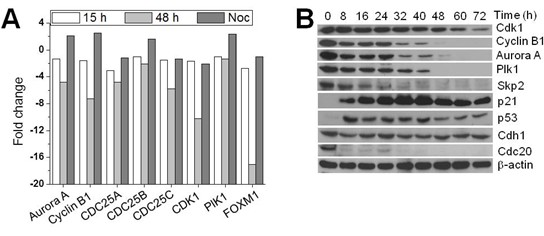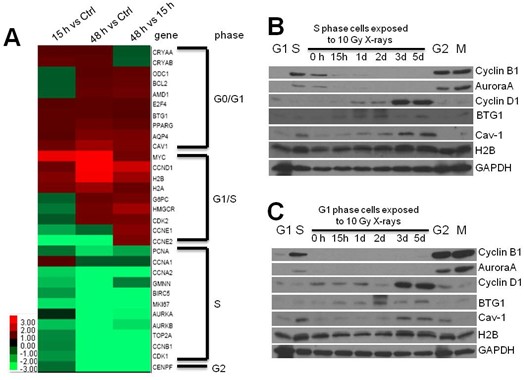Diploid cells undergoing senescence and mitotic slippage have been reported in the literature. However, the mechanisms triggering senescence in long-term G2-arrested cells are currently unclear.
Based on the previous discovery of the new phenomenon on cell cycle suspension induced by ionizing radiation (IR), the researchers in Department of Space Radiobiology, Institute of Modern Physics, Chinese Academy of Sciences (IMP) further reveal the molecular mechanism. The results show that why replication senescent cells trend to be in G1 phase.
After IR, the global genome expression profiles revealed that genes functioning in G2-M transition were down-regulated, which induced long-term G2 arrest. And then, the levels of the S/G2-specific markers, Cyclin B1 and Aurora A, were significantly down-regulated, while G1-specific markers, Cyclin D1 and Caveolin-1, were distinctly increased at both the transcriptional and translational levels. These findings collectively imply that long-term G2-arrested cells undergo senescence via G2 slippage were down-regulated, which induced long-term G2 arrest.
This is the first time study to present the current hypothesis on G2 slippage and demonstrate that G2 slippage is the mechanism responsible for senescence of cells under long-term G2 arrest. In addition, the clarification of the mechanism underling G2 slippage is believed to be of significance to the study of space radiation and tumor radiotherapy.
This research has been published on Cell Cycle 2013; 9(12); 1424-32.

Fig.1 Genes essential from G2 to M transition were down-regulated upon long-term G2 arrest both on the transcriptional and translational levels. (Image by IMP)

Fig.2 Long-term G2-arrested cells undergo G2 slippage. (Image by IMP)

